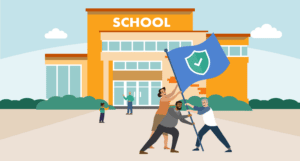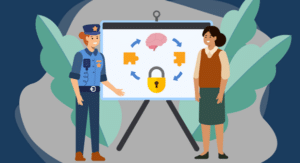Listen to this blog
4 minutes
Student elopement—when a student leaves the school campus without permission from the adults responsible for them—can have significant negative impacts. Elopement can occur for a variety of reasons, including academic stress, bullying, social isolation, mental health issues, or problems at home.
When a student elopes, they are at risk of physical harm or danger, and their absence may cause significant concern and anxiety for their family, school officials, and the community. And, by missing school for an extended period, the student misses important lessons, assessments, and assignments—which may cause them to fall behind their peers and feel even more overwhelmed when they return to school.
Elopement can also foster a lack of connectedness, creating further barriers to reconnecting the student with the school community.
Responding to a student elopement
When a student elopes, school staff should take the following steps:
- Communicate and assess the situation. Providing staff the ability to quickly communicate situations requiring intervention means your personnel can respond faster—and gives your administration the notice they need to quickly determine the level of risk to the student. If the student is in immediate danger, such as if they have eloped into a dangerous area or if they are showing signs of distress, the school should call 911. If the student is not in immediate danger, the school should still take steps to locate the student and ensure their safety.
- Locate the student. This may involve searching the school grounds, contacting the student’s parents or guardians, or calling the police. Maintaining two-way communication with your staff will allow updates on the student’s status with the personnel involved.
- Provide support to the student. Talking to the student about what happened, providing them with a safe place to calm down, or connecting them with resources can help them cope with their emotions. Documenting concerns about their wellbeing can help your counseling staff plan the best interventions for that student to better prevent future elopements.
When a student elopes, it is important to act quickly and effectively to ensure their safety and well-being. Raptor Team Assist can help.
Team Assist provides configurable alert types for localized incidents as well as their own distribution lists, which means the right people are promptly notified and prepared to provide assistance. And, unlike badge-based options, your staff can share information about the situation immediately—so you don’t waste valuable time determining what sort of response is needed.
Prevention strategies for student elopement
When it comes to preventing student elopement, it’s important to consider the various personal and school-related factors that can contribute to this behavior.
Personal factors can include:
- Mental health issues,
- Family problems, and
- Relationship issues.
School-related factors can include:
- Academic pressure,
- Bullying, and
- A lack of support.
“Too often, we think reactively instead of proactively in how we’re addressing students’ mental health concerns. To be proactive, we have to start recognizing when our students are struggling before it reaches a crisis point.” Dr. Amy Grosso, Director of Behavioral Health Services at Round Rock ISD (TX)
To effectively prevent student elopement, it’s crucial to take a proactive approach that involves early identification and intervention, as well as creating a supportive and inclusive school culture. Here are some prevention strategies that can help:
- Early identification and intervention
Develop a school-wide protocol for identifying and addressing student elopement. This should include guidelines for reporting, assessing, and responding to student elopement incidents. Train school staff on the signs and symptoms of student elopement, as well as effective intervention strategies. Staff should be aware of the personal and school-related factors that may contribute to elopement and be prepared to provide support and resources to students who are at risk. - Fostering positive relationships with students and their families
Provide opportunities for students to build positive relationships with school staff, such as through extracurricular activities, mentorship programs, or counseling services.
Encourage open communication between school staff, students, and families. When families feel informed and involved in their child’s education, they are better equipped to provide support and resources to prevent elopement. - Creating a supportive and safety-conscious school culture
A school culture that values and celebrates diversity, inclusivity, and individuality helps students feel accepted and included in their school community—making them less likely to feel isolated or disconnected. To further encourage a sense of belonging and engagement, provide opportunities for students to participate in school decision-making processes, such as student councils or peer mediation programs.
Students who are struggling with mental health issues may be more likely to engage in elopement. Encourage a culture of supportiveness by providing students with access to mental health resources, such as counseling services or support groups.
To develop your school’s culture of safety, implement policies and procedures that promote safety and security on campus, such as monitoring systems and safety drills. When students feel safe and secure in their school environment, they are less likely to feel the need to escape.
Raptor is a true partner in your school’s safety
Staying on the leading edge of school safety is a journey best taken with trusted partners who have your best interests in mind. Learn more about how Raptor can help your school better communicate concerns about student wellbeing:
Related Resources
Guide to K-12 Student Wellbeing
Strategies to Recognize, Document, and Support Students in Distress
Listen to this blog
4 minutes








